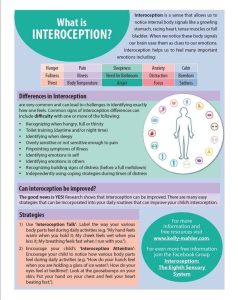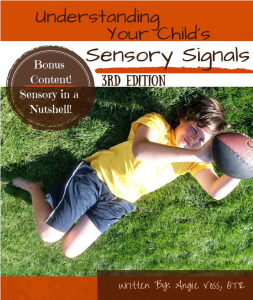Autistic people tend to process sensory information in ways that are different from most other people
Of course, every autistic person will have different and individual sensory needs – and to help them meet these needs, you will need to get to know the person
Here is a video where our clinicians and a lived experience partner explain sensory processing:
Click here to view a transcript of this video
Hypersensitivity
Commonly, an autistic person may find certain sights, sounds, tastes, textures, smells or movements too much – and difficult to cope with. This is known as ‘hypersensitivity’
This may mean that certain noises, clothes, foods or lighting might make them feel ‘dysregulated’ this is the term used when someone is feeling very irritated, distressed or even in pain – due to their sensory sensitivity
Hyposensitivity
It is also common for an autistic person to want or need other types of sensory information more than most other people. This is known as ‘hyposensitivity’
For example, they might like to touch certain fabrics or listen to certain sounds
These things can be ‘regulating’ for them – this means they are soothing or satisfying or help them generally feel happy and comfortable
Interoception
There are also senses within the body and mind
Sensing these is called ‘interoception’
These senses can be hard for autistic people to gauge and regulate
For example, they might struggle to realise they are hungry, thirsty or cold – or be super sensitive (‘hypersensitive’) to any of these
They might be hypersensitive to pain – or alternatively appear to be under-sensitive (‘hyposensitive’)
Similarly autistic people sometimes struggle to recognise and ‘read’ their own emotions

For more information on interoception click here for Kelly Mahler’s website
Proprioception and vestibular sensitivity
Proprioception is our ability to work out where our bodies and parts of our bodies are – in time and space
And we also have a vestibular system that helps us to sense our balance
Autistic people can often have difficulties with both these sensory systems
For example, some autistic people might appear clumsy or walk awkwardly
Variability
The way autistic people process sensory information varies from person to person and can change over time – or even from day to day, often depending on stress levels
So, for example, one person could be hypersensitive to noise, such as clocks ticking or fire alarms – but as they age may also find they enjoy listening to very loud music by choice, at certain times
Another person may find it unbearable if someone brushes past them in a corridor or they get a papercut – but on another day may enjoy a squeezy hug or sustain a significant injury and appear to be fine about it
Ideas to help
Stimulating one sense can have a knock-on effect on another sense. So, if a person is already feeling dysregulated, this may make them hypersensitive to other sensory information
For example, a person who is sensitive to bright lights but usually copes OK with some noise, may find that if they are in a brightly lit environment, this dysregulates them and they also struggle to cope with noise at the same time
Similarly, if a person engages in a certain sensory seeking behaviour, they know helps to regulate them (e.g., fiddling with a fidget toy, sniffing a favourite body lotion, listening to good music) – they may find this helps to make them less likely to be dysregulated by other sensory experiences
It is vital to note that if an autistic person is struggling to tolerate sensory information, this will likely cause stress
It will probably have a negative impact on their ability to focus, to interact with others and to take part
So, considering how you can adapt the environment is crucial. For example, reducing noise and visual distractions; providing and allowing headphones / ear defenders; low lighting, drawing the curtains, sunglasses; moving to a different room; adapting clothing and / or food options
If sensory processing difficulties are causing a person problems, you may want to ask your doctor about the possibility of a referral to an Occupational Therapists (OT). OTs are the experts in assessing a person’s specific sensory profile and working out useful adaptations and interventions
A health care professional (including GPs) or a school teacher can make a referral for a Parent Education Workshop – for parents whose children have difficulties in their daily life caused by sensory processing problems. They would need to complete and submit the following form:
Click here to access the families, young people and children’s service referral form
Further resources
- It’s Not Rocket Science is a report carried out by the National Development Team for Inclusion. It focuses on meeting sensory needs in mental health inpatient settings – and contains excellent advice that could be adapted to any environment. Click this link to access It’s Not Rocket Science
- A book you may find helpful: Understanding Your Child’s Sensory Signals by A Voss

- Autism LevelUP! has a resource to help you consider a person’s sensory needs and how to accommodate these. Click here to access Autism LevelUP sensory needs chart
- You can find out about ‘Sensory diets’ and ideas to try click here for sensory diet ideas
- For information on how to help your child with sensory processing related problems in school please click here to go to ‘Sensory Processing Issues in School’
- NHS England have produced a support pack for local health systems to use to support their autistic citizens. Click here to find the NHS sensory-friendly resource pack
- Misophonia is a strong hypersensitivity to particular sounds – example triggers include the sound of other people eating. For more information on how to support with this, click this link How to get help for misophonia on the NHS — Sounds like Misophonia


